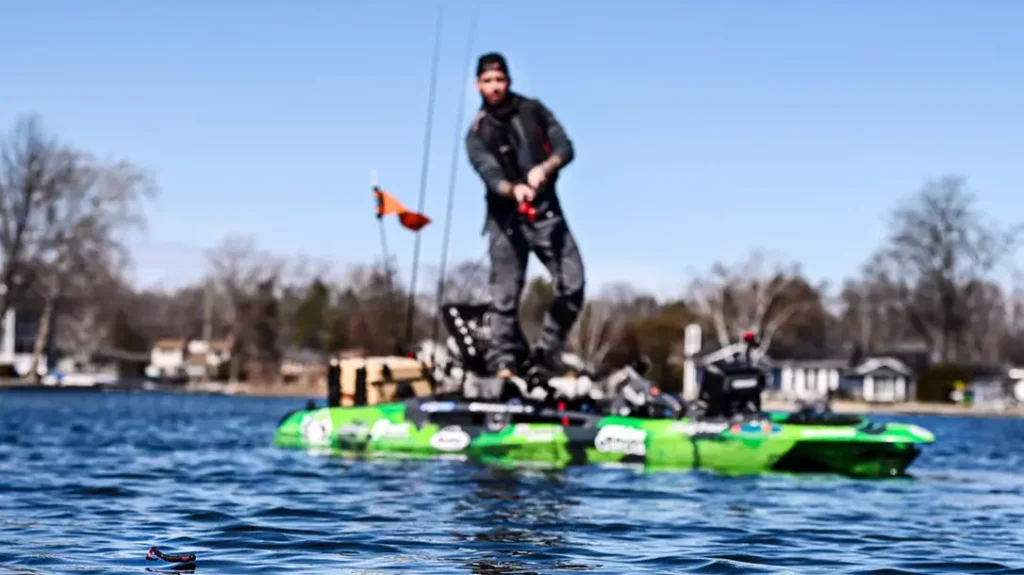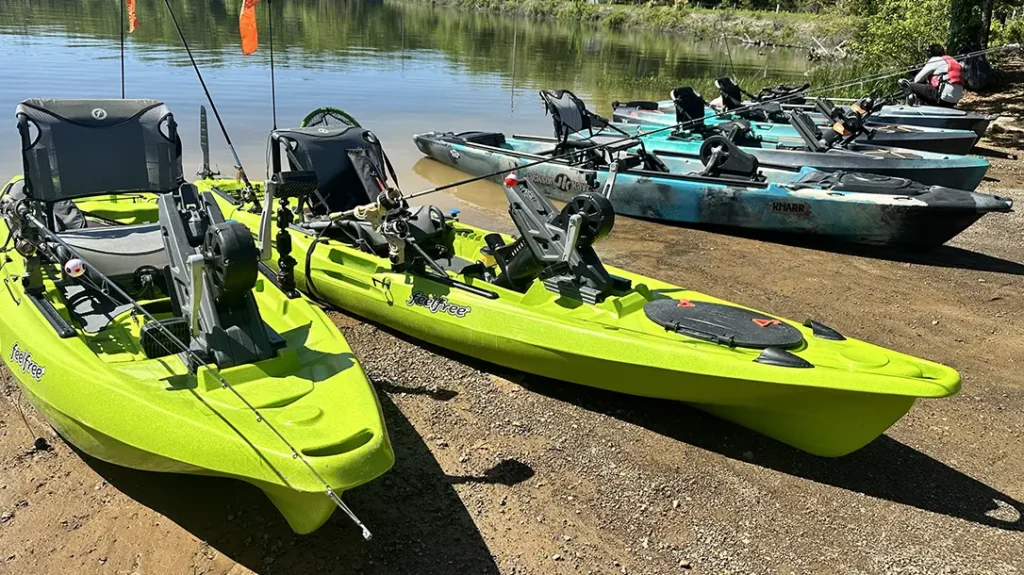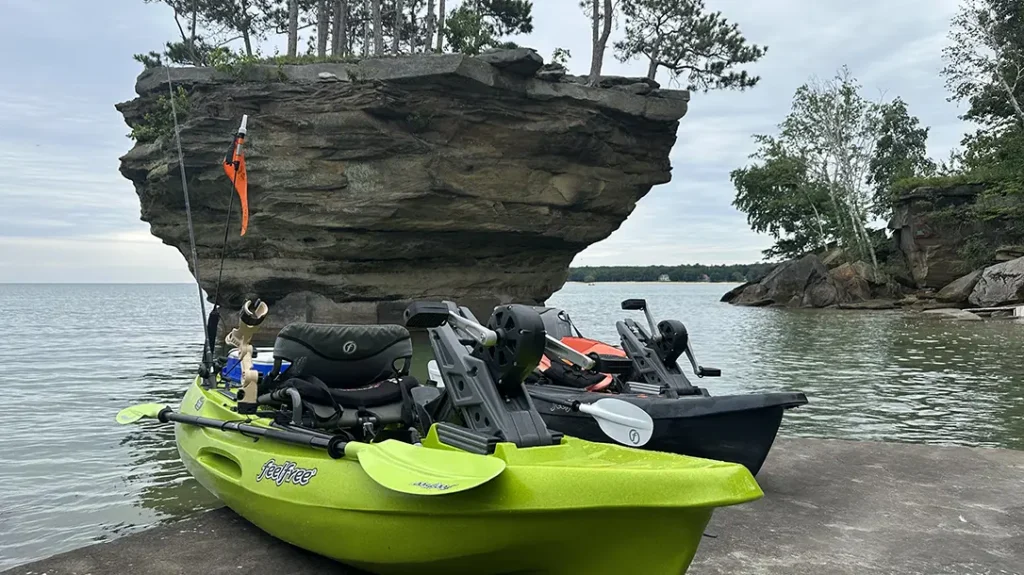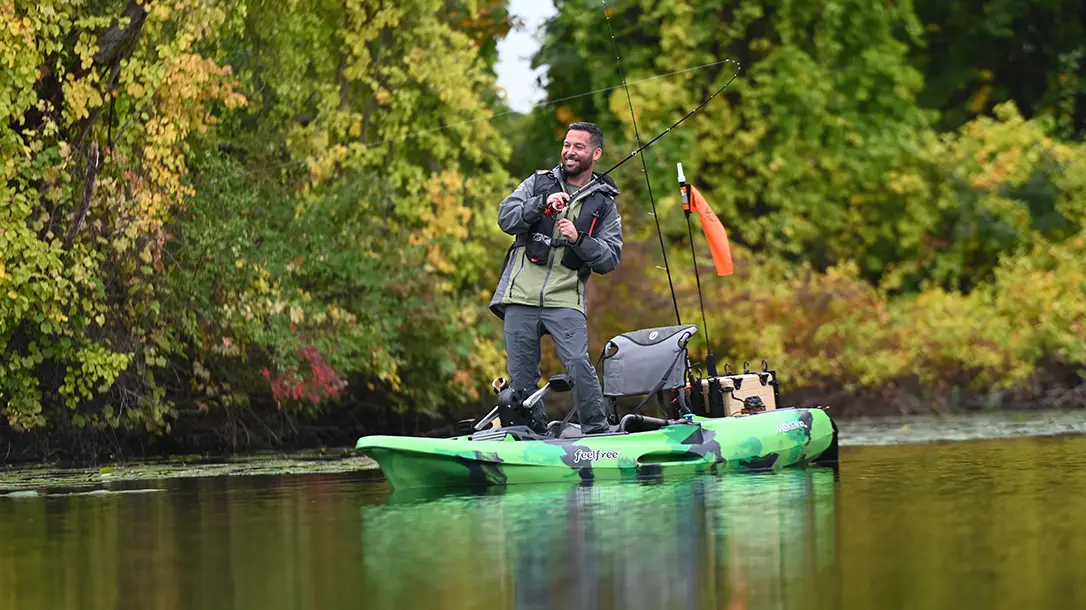Welcome to kayak fishing! This is a sport that allows people to find peace and adventure without the need for gas, oil, loud motors, or the requirement to launch their vessel from a trailer or boat ramp. Picking out your first kayak can be a little tricky due to the numerous options and the feedback on social media. In this article, I’ll help you decide what to look for and pick the kayak that best suits you and your needs. Let’s start with the first three things to consider when looking at your first or next fishing kayak.
Picking Out Your First Fishing Kayak – Do’s and Don’ts
You have to pay for it, so this one’s up to you. Fishing kayaks can range from $500 to $5,000 and everywhere in between. What brands, models, and options you can look at will all start with what you can comfortably afford. If your budget is endless, then so are your options. Suppose you want something stable, such as a kayak with a pedal drive or motor. Or one that offers more features than a standard kayak. You will be looking at kayaks priced between $1,000 and $5,000. The less expensive pedal-driven kayaks, priced between $1200 and $1599, are a great option for those with a lower budget. They offer some very helpful features.
After the $1,600 price point, you are looking at specific, larger brand names. These may have more bells and whistles and could even include electric motor options. For under $1,000, you are looking at some higher-end paddle kayaks that are great for stability and mobility. However, they will lack the features that a pedal drive will offer, such as hands-free movement. Ensure you establish a budget and stay within your means. This allows you to enjoy your new kayak without regret over overspending. There is something for every budget, and the fish don’t care what brand your kayak is.
Advertisement — Continue Reading Below
Storage and Hauling
You picked out your budget and have some options to look at now. But how will you get it to the water, and where will it go at home when you are not using it? This is step two in narrowing down your search. If you decide to get a larger kayak, you can have stability and comfort with a wider, longer, and heavier kayak. However, the tradeoff will be that it will be more difficult when not on the water. How do you plan to transport the kayak? If you have a pickup truck bed or trailer as an option, your choices are a bit broader.
If you plan on car-topping or loading the kayak on your roof, then you will be more limited. You want something light enough to lift and load by yourself, and not exceed the weight limit on your roof. If you prefer a heavier kayak, consider investing in a trailer for launching and hauling. I usually suggest 65 pounds or less for car-topping, and anything over 65 pounds should be loaded into a truck bed or trailer. Then there come storage options. If you live in an apartment and plan on taking your kayak up and downstairs, then a lighter, smaller model will be much easier for you. If you have a garage or yard to store the kayak when not in use, then you are not limited by size. Make sure you think this part through so you don’t get one that you cannot comfortably use.
Advertisement — Continue Reading Below

How Will You Use It?
Now that you have narrowed down your options by budget and size for transport, the most important step is to consider where and how you will be using it. What is your body type? If you want to fish in small rivers and ponds and are a smaller angler, you will want a smaller kayak that is agile and mobile in these small environments. The smaller and lighter the kayak, the more agile and maneuverable you will be. The larger, wider kayaks will offer more comfort and stability. However, they provide much less mobility and agility. Large bodies of water or larger anglers will need a larger kayak.
This is a game of tradeoffs. If you want stability and comfort, you will need a larger, more robust kayak to transport and maneuver. If you want speed and agility, you will lose stability and some comfort due to the smaller, narrower kayak. I use my larger kayaks for fishing in larger waters or targeting larger fish, as they can handle the weight and waves more effectively. When I head to the Gulf or Great Lakes, my largest kayak does the job well. When I fish small lakes or rivers, my smaller kayaks work best.
Advertisement — Continue Reading Below

Fishing Locations
Think carefully about your typical fishing locations and target experiences before deciding on your kayak. You may choose something that will not be enjoyable in small waters. Alternatively, you could end up with something that could be dangerous in larger waters. I believe in the portage method. Try them all and one will feel just right for you. No one is perfect for every kayak, but every kayak is perfect for someone.
Pro Tip
After spending 10 years on kayaks for a living, I have learned that you are always trading off one thing for another. Regardless of the brand, model, or size, you will always be trading off one feature for another. I have some decked-out kayaks with motors, fish finders, and every accessory you will find on a bass boat. However, I have to have help loading and unloading them since they weigh over 200 pounds fully rigged in my trailer. I also struggle to turn easily in the heaviest and largest kayak I have.
Advertisement — Continue Reading Below

First Fishing Kayak
That is my tradeoff when I use that kayak. On the other hand, when I get in my smaller, lighter kayak, I can move like a sports car and turn on a dime. They are very easy to load and unload, and I can throw them on my truck if needed. However, I then sacrifice stability and comfort in the narrower kayak. Pick your tradeoffs and decide which kayak checks the most boxes for your personal needs. Avoid buying what your friends or the Internet tells you to buy. After all, you are the one who has to buy it, haul it, and fish in it. Not anyone else.
WHY OUR ARTICLES/REVIEWS DO NOT HAVE AFFILIATE LINKS
Advertisement — Continue Reading Below
Affiliate links create a financial incentive for writers to promote certain products, which can lead to biased recommendations. This blurs the line between genuine advice and marketing, reducing trust in the content


